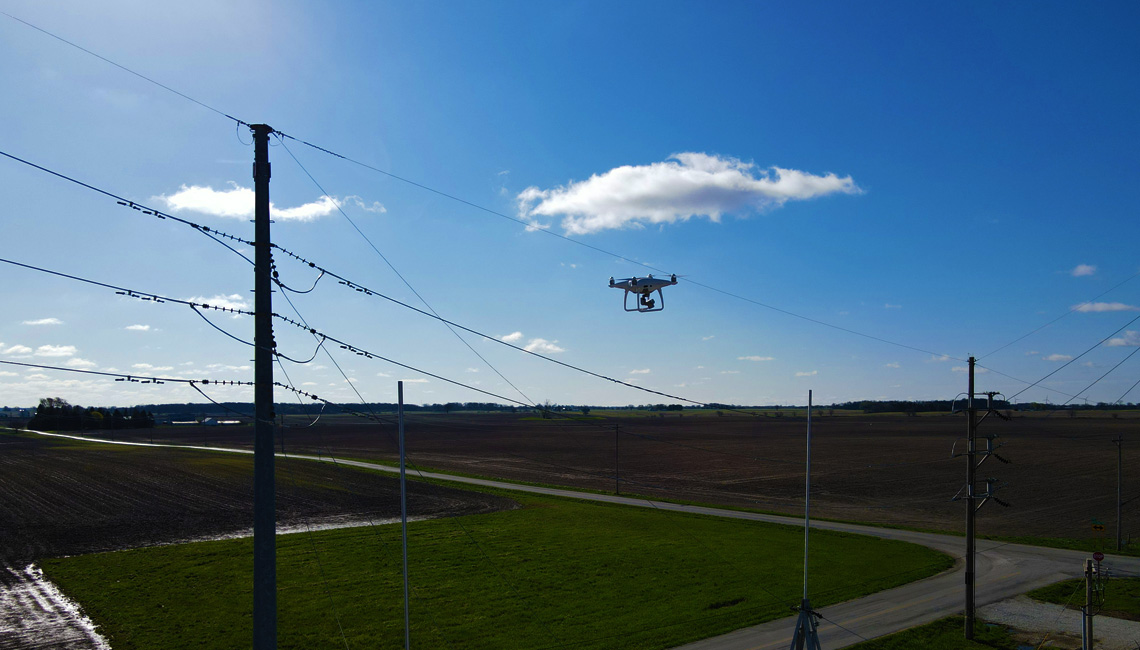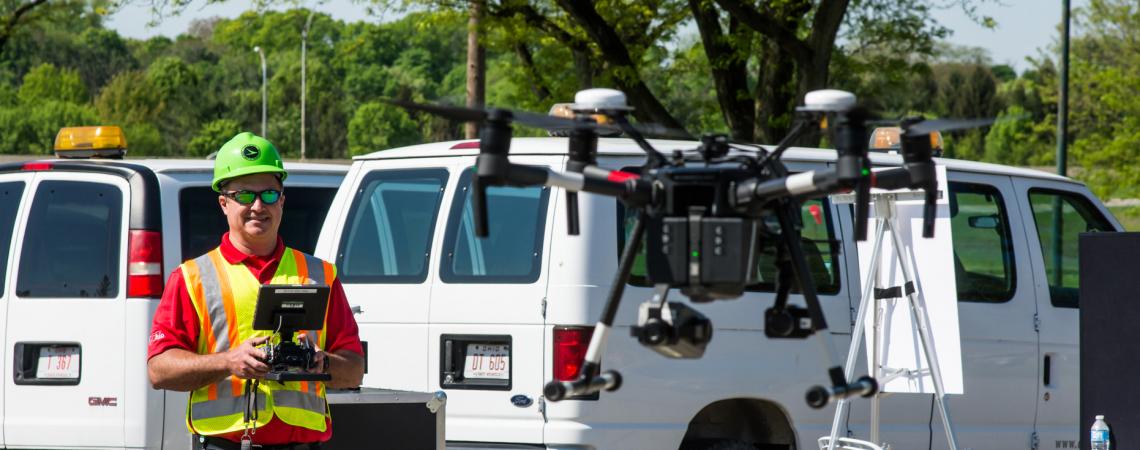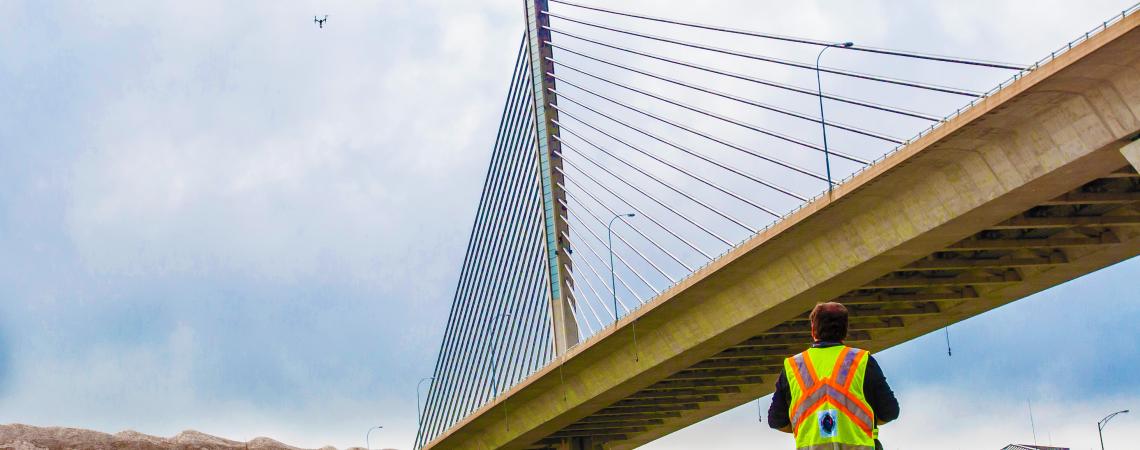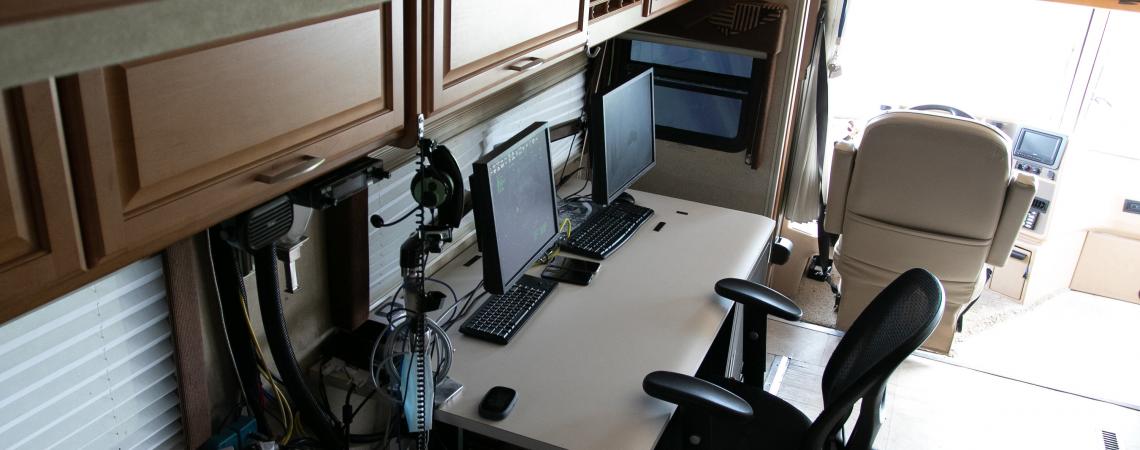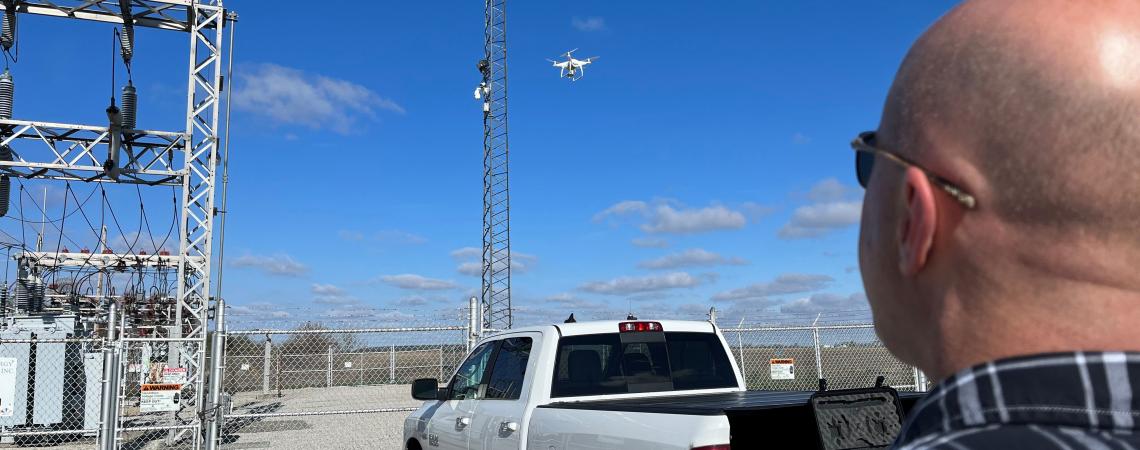At the beginning of the 20th century, two brothers from Ohio launched a revolution in air technology at Huffman Prairie, a cow pasture located just outside of Dayton. On that grassy field, Orville and Wilbur Wright researched and developed reliable, controllable aviation — and with it, the ability to connect people and businesses across the globe.
Ohio has led the nation in airspace innovation ever since. In Springfield, about 30 miles east of Huffman Prairie, sits the Ohio Unmanned Aircraft Systems (UAS) Center, where the state manages and helps develop the next generation of air technology: drones, and the communications and systems that control them.
The Ohio Department of Transportation uses drones to inspect bridges and highway systems (photo by Bruce Hull/courtesy of Ohio UAS Center).
The Ohio Department of Transportation uses drones from the UAS Center to help with a variety of projects. In 2021, the center’s drone flight team logged over 2,200 flights for ODOT, including bridge inspections, construction assessments, facility inspections, mapping, and traffic and roadway monitoring.
Why does ODOT use drones? “It’s ultimately about safety, both for drivers on the roads and for people who are working on them,” says Luke Stedke, managing director of communications and policy at DriveOhio, a state organization that serves as a single point of contact for all of Ohio’s smart mobility initatives. “Drones can be used in situations that are potentially dangerous to our crews, such as bridge inspections on busy highways.”
Adaptable, efficient, economical, and capable in a variety of tasks, the center’s drones have also conducted roller coaster inspections for the Department of Agriculture, assisted the Ohio Environmental Protection Agency with debris obstructions and spills, and provided disaster relief and searches for the Ohio National Guard.
In addition to managing the state’s drone operations, the center offers a high-tech environment for collaboration between government, research, and private industry partners on unmanned aircraft and advanced aviation technologies.
FlyOhio, an initiative of DriveOhio that promotes research in lower-altitude airspace technology, oversees testing areas at the nearby Springfield-Beckley Municipal Airport. Those areas have special permission from the Federal Aviation Administration to fly unmanned and experimental aircraft beyond the visual line of sight, which is the current FAA regulation.
The Ohio UAS Center, in partnership with the Air Force Research Laboratory, has developed and installed a special low-altitude, detect-and-avoid radar system called SkyVision that allows sensor technology testing as well as tracking of UAS technologies in lower-altitude airspace. That lower altitude (below 2,000 feet) is the area where most commercial drones operate — including package delivery, cargo transport, and healthcare delivery.
The emerging advanced aerial mobility market has the potential to bring significant economic benefits to the state. According to recent research conducted on behalf of the Ohio UAS Center, the state can expect $13 billion in economic impact over the next 25 years by investing in the advanced autonomous aircraft sector.
“Technology is evolving and so are the economic opportunities,” Stedke says. “The jobs of tomorrow are going to be in these fields. What we are working toward with the Ohio UAS Center is to ensure the state leads that 21st-century air mobility accountability by not only encouraging technology and research but also through workforce development programs so we can fill the industry jobs that are being created.”
In essence, the center will serve as the state’s one-stop shop for unmanned aircraft operations and advanced aviation technologies. “I truly believe that the Ohio UAS Center is going to be the next Huffman Prairie,” Stedke says, “connecting people and businesses across the world with the next generation of aviation innovation.”
